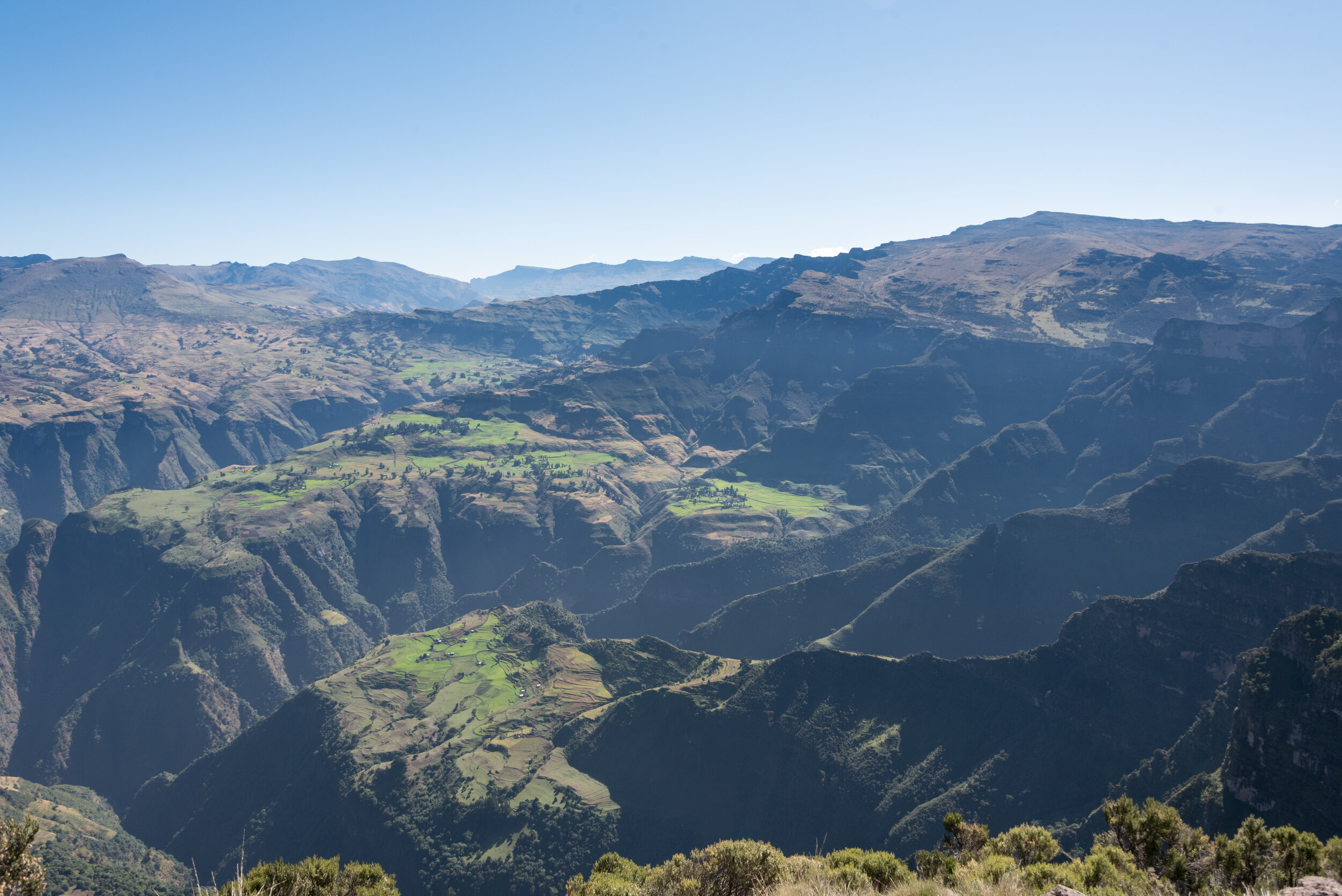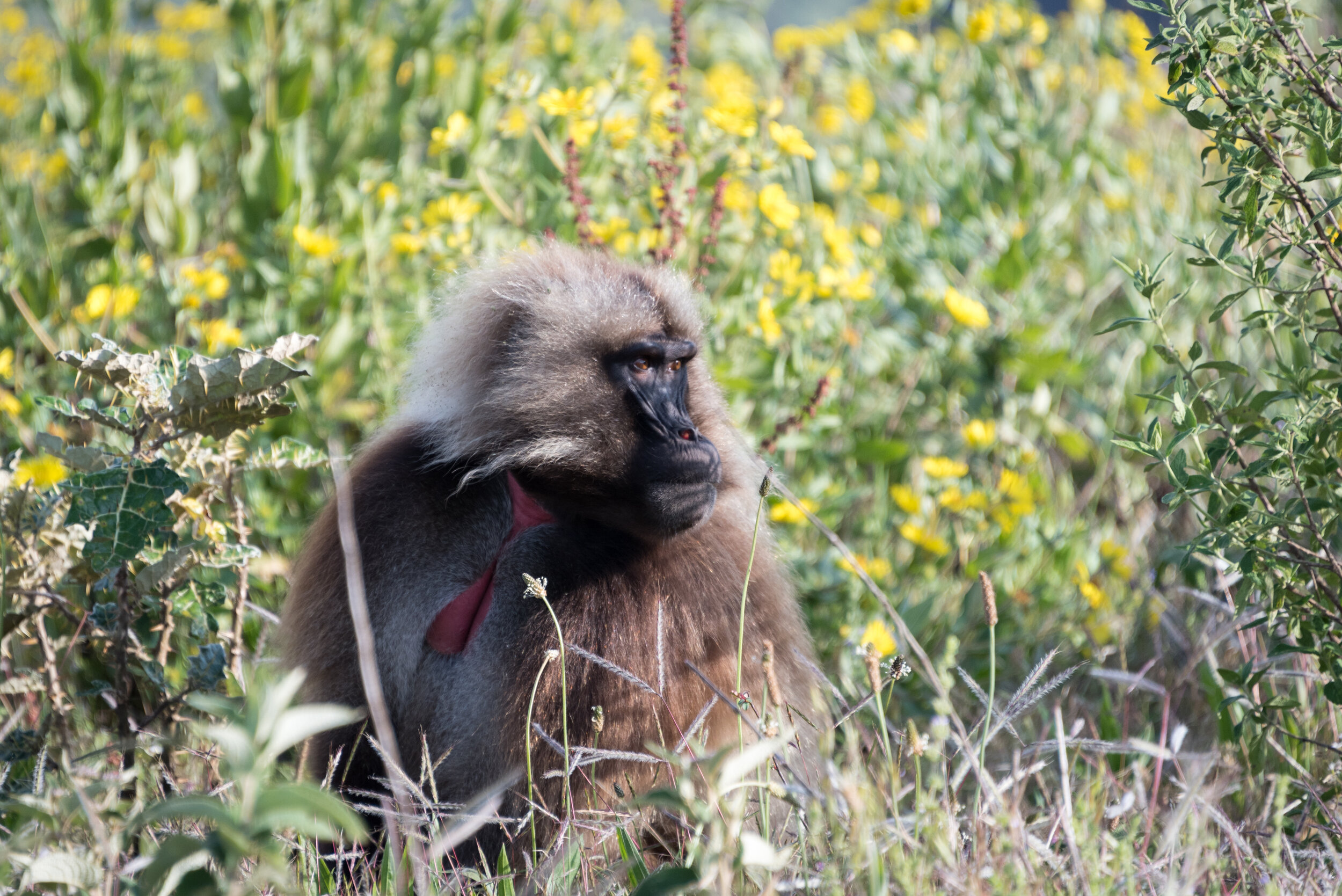Chanting reverberates inside the deep tunnels that weave their way through the volcanic rock, growing louder and louder the further we walk and seemingly deeper we plunge into the maze of a highway built 30 feet below the surface. Popping out of the earth, we find ourselves surrounded by thousands of white-robed worshippers repeating chants, kissing the ground, and, naturally, staring at us. The rock they kiss is sacred, as it’s the closest many of them get to the church itself. Too small to fit the masses, too many rules for everyone to be allowed in, the rock outside becomes the church itself, made from the same ground, with nothing but sweat and a chisel used to sculpt out a church buried in the earth.
This is Lalibela
Created sometime in the 11th century, the monolithic churches of Lalibela are carved completely out of the earth. Unlike the Tigray churches that were carved into the rock, these churches were built by chiseling the rock and earth away, leaving only the church behind, much like Michelangelo chiseling the David from a giant slab of marble. How this was possible is beyond me, as many of the churches contain multiple rooms inside, with pillars and archways, along with windows carved into crosses and other shapes. Legend has is that only a hammer and chisel were used, which, 1000 years later, is difficult to fathom. What I found to be most authentic about the churches was that they were not perfect, and how could they be? Shapes of crosses were slightly uneven, pillars were sometimes top heavy, and lines not always perfectly straight. Imagine chiseling a 30 ft tall pillar and accidently going too deep, would you start over every time? There’d be no pillar left by the end! Add to that the fact that the churches are still very much in use today, with very little (local) thought of preservation or restoration aside from external weather covers and makeshift drainage systems.
While the minor flaws are noticeable when looking closely, taking in each church from outside, they are clearly spectacular works of art. Each of the 11 churches is connected by a series of underground tunnels. Only when you’re standing on the top of the hill do you realize that the roofs of all the churches are perfectly situated at ground level. All the holiness lies below the surface. The star of the show in terms of preservation and design is St. George, set off at a distance from the other churches. Inside there’s not much to look at, but the outside is perfectly carved into the shape of a cross, unfettered by the years of wear and tear due to an ingenious drainage system built onto the flat roof. From below, the church dominates the man-made crater it sits in, but from above, the cross-shaped roof is but one feature of the vast rolling hills that surround the town.
We were fortunate enough to arrive the afternoon before the festival of St. Michael. The following morning, we arose at dawn to join the worshippers as they gathered on the slopes in front of the church, and in a makeshift tent I assume was built as a shelter from the rain. Like some sort of tent revival, chanting and dancing emanated from the bright white tent, where priests and choirs performed song and dance while crosses were paraded in and out of the church itself. Every 15 minutes, decadently-dressed priests carrying a large cross would emerge from the tunnels, into the tent, then back into the earth and the church. More and more white-robes surrounded us as a more formal ceremony began. Our vantage point above the church gave us a bird’s eye view of not only the now-packed hillside, but of the church itself, as worshippers surrounded the walls, kissing the damp rock faces and peering through the windows.
I came to Ethiopia knowing of its deep Christian roots, and expected to feel some sense of familiarity with the practices and beliefs. What I experienced was altogether foreign in almost every way, from the long-distance worship of kneelers outside church gates, to Ark of the Covenant – centric church constructions, to the seemingly endless numbers of priests, to the almost cultural vs. spiritual practice of the religion itself.
I’d be remiss not to mention that, much like the rest of Ethiopia, while the sights of Lalibela are spectacular, everything that goes with it is, unfortunately, not. The city feels and looks like a shanty-town, with minimal paved roads (though much Chinese construction is happening), and very little of note outside a couple of nice hotel restaurants. Another unfortunate, but familiar tune, was the confusion of whose pockets all the money was residing. Each and every tourist pays $50USD to see the churches, which is a very significant amount of money by Ethiopian standards. Yet, aside from the decade-old UNESCO-built structures protecting the roof of the churches, it is unclear as to where that money is going. Certainly, the people of Lalibela are not seeing much.
Below ground, in amongst the churches and the tunnels, is where time should be spent, where it’s possible to remove yourself from the world above, to bring yourself back in time, when the world from this view didn’t look all that much different than it does today. I found myself removed from reality towards the end of our visit, as we walked down a long, dark tunnel, meant to signify the passage from hell to heaven. Walking, eyes wide open, in pitch dark, feeling the sides and top of the tunnel for my bearings, I was walking with no sense of direction, no idea where the path might lead, and no way of knowing how to go back. As it always does, the path lead to light, where the slightest ray was enough to lead me out of the unknown and onto the next endeavor, this time in the form of an empty, 1000-year-old rock turned house of worship.
What’s next?

















































